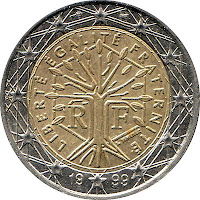 |
| 1945 Mexico 2-peso gold coin |
Options for Insuring Your Coin Collection
If a natural disaster struck in your community, would your coin collection be covered against a loss? Or if a burglar were to target your property, do you know that your collection is insured up to its full value?
These are scenarios we don’t want to think about, however, they are risks any collector should consider.
Recently an avid collector in Virginia found out the answer to one of these questions the hard way. The collector, whom we shall call James, was the victim of a home burglary. Amongst some of his stolen property was his collection of foreign and domestic coins. James had looked into insurance for his collection a few years prior, and at the time was satisfied with the limited coverage provided under his existing homeowners policy. However, over the years James’ collection had increased in value and when it came time to file a homeowners insurance claim for the theft, he found out the sad truth. His homeowners insurance policy didn’t cover even a sixth of the value of his collection.
This type of situation isn't uncommon however it's also easy to avoid.
Get the right coverage
As mentioned above, most homeowners insurance policies will provide coverage for a collection such as a coin collection, however, the coverage limit is often very low. For example, most home insurance policies place a maximum coverage limit of $200 on items such as coins, bank notes and gold bullion. This means that in the event of a loss, your policy would only pay out $200 towards the replacement of any (or all) of these items kept in your home.
A better option is to schedule an endorsement (also called a 'rider') on your homeowners insurance policy that extends the coverage limit for your collection. You will need to discuss this with your home insurance carrier and they will ask you to supply an appraisal from an official coin appraiser. Always make sure your collection is insured up to it’s full value, especially if you are regularly adding new coins.
Finally, one of the best ways to insure your coin collection is to purchase a coin collection insurance policy from an insurer that specializes in this type of coverage. This policy, oftentimes referred to as a 'personal articles floater' is completely separate from your homeowners policy and will oftentimes offer extended protection not offered under a home insurance policy. For example, a coin collection insurance policy will usually cover theft of your collection while you are traveling to a coin show.
Do Your Part
Aside from having the right insurance policy in place, take steps to avoid theft and/or damage to your coins by keeping them locked up in an inconspicuous place in your home. Don’t advertise your collection to people you don’t know well. Keep a record of every coin in your collection so that you have proof of inventory and ownership.


























